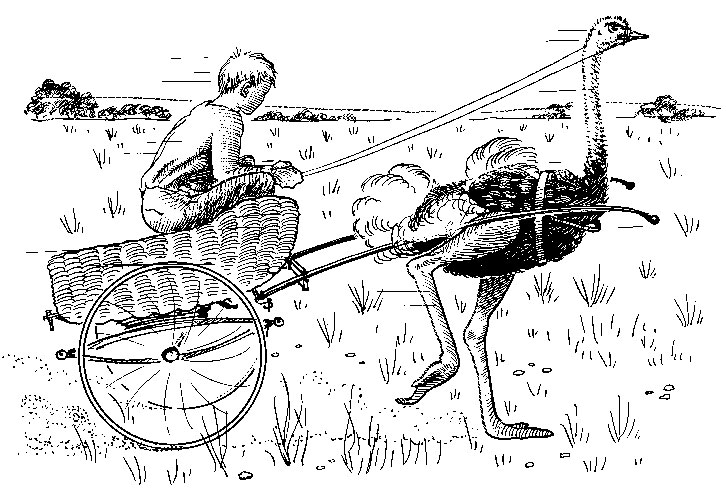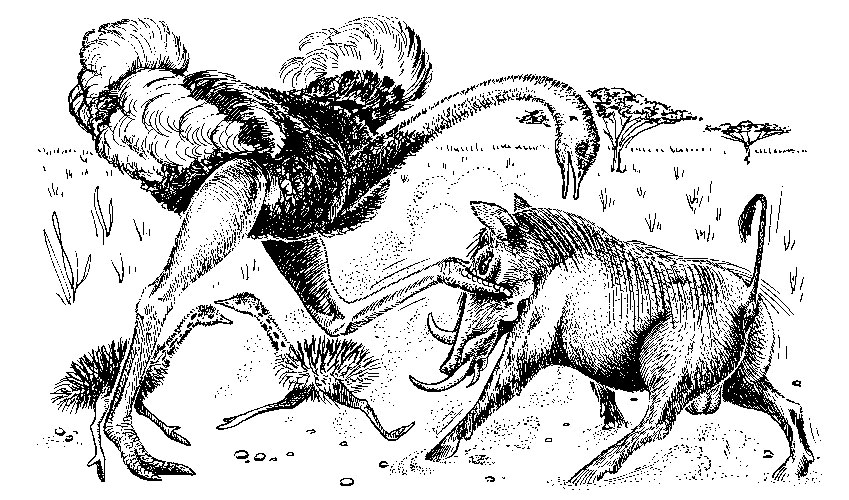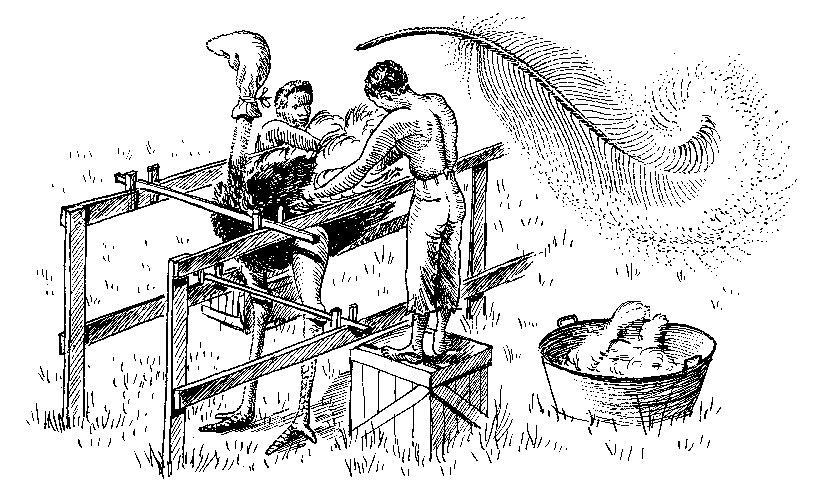I have seen ostriches at the zoo, and I remember learning about them in elementary school, but I don’t remember ever being impressed by them or even caring about them. In fact, what I knew about ostriches before reading this fascinating book by Herbert Zim could be summed up in just a few facts: ostriches are fast runners, their eggs are large and considered delicious by foodies, and they bury their heads in the sand. Guess what? Only two of those “facts” are true.
“Ostriches do not bury their heads in the sand when they are frightened, as you have heard. When on the nest, they squat low, with heads and necks on the ground. This makes them harder to see. But an old fable dies hard and this one is still being repeated, although no ostrich has ever been seen burying its head.”
Ostriches, p. 30
Originally printed in 1958, and beautifully reprinted by Purple House Press in 2021 as part of Purple House Press Nature Study Library, this engaging and informative science reader was interesting enough that all of my children (including my almost 15-year-old birder) delighted in me reading it aloud. In addition to being captivating with good science, the illustration by Russel Francis Peterson enhances the story and contributes greatly to the reader’s understanding.

Zim opens the story with a general family tree of birds, and a good explanation on the evolutionary realities of the few remaining non-flying birds made up of the ostrich family and the penguin family. He explains the anatomical differences between flying and non-flying birds, and helps us understand how birds like ostriches can still be classified as birds despite their inability to fly. For a dozen pages, we are treated to the differences in bones, feathers, wings, and legs of flying versus non-flying birds, and each page has several illustrations that help us understand what we are reading. It really is good science, but it is also deeply interesting.

As Zim gets into the life cycle and habits of the ostrich, we delighted in the stories (and illustrations) of the ostrich tackling a warthog, of one stealing a woman’s hat, and of how the ostrich’s wings puff up when he runs because he doesn’t have sufficient muscle control to keep them pinned to his side. We laughed when Zim explained that ostriches are not good race animals because, even though they are very fast, they often just stop in the middle of a race and sit down on the ground because they don’t want to run anymore.

I had no idea that feather boas and feather dusters had been made of ostrich feathers, or that ostriches eggs have been used by many civilizations as drinking cups and decorative containers. I knew that there were ostriches in the United States, but I had no idea how they got here and how hard it was to establish them. I also had no idea that there were many different kinds of ostriches, and that there were so many extinct kinds as well.
We so enjoyed learning more about these funny, powerful, and unique birds. I would love to find more Herbert Zim books, because I think that these will delight and inform us well.
If you want to learn more about Herbert Zim or this book, check out this link. If you would like to purchase this book, you may purchase it directly from the publisher here or from Amazon here.